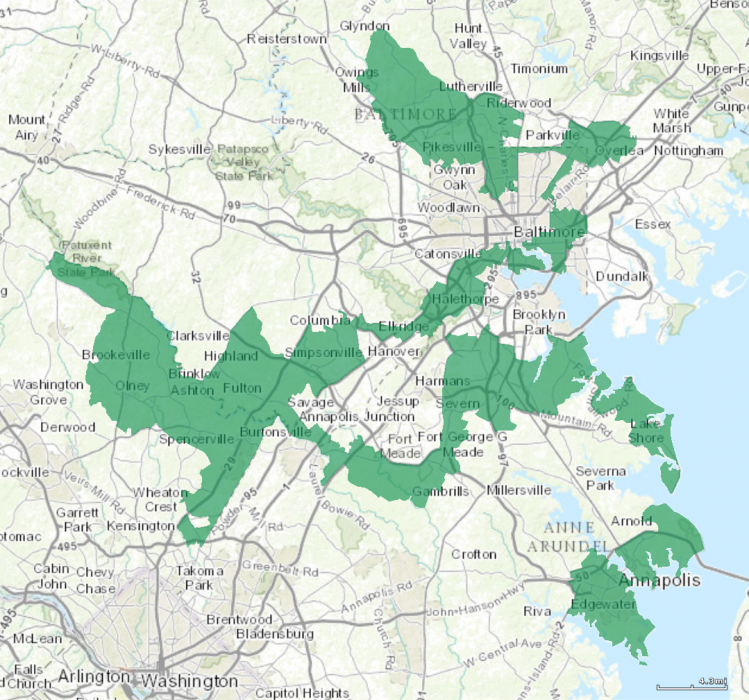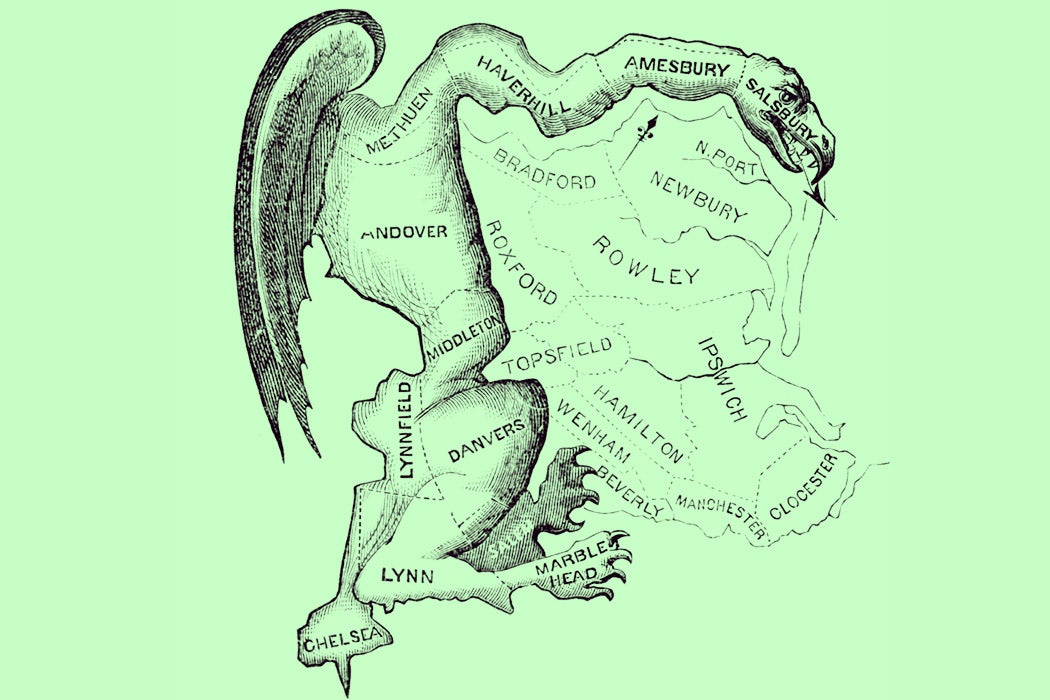Why have American politics become so polarized?
For many pundits, the culprit is gerrymandering. Gerrymandering is the process by which districts for the House of Representatives are drawn so that one party—in recent years, because of their control of most state houses, the Republicans—has a distinct election advantage. The theory is that since districts are drawn to benefit the party in power, incumbents have little reason to reach beyond their most ardent partisans. The end result: politics driven to extremes, with representatives having little incentive to compromise.
Drawing electoral districts to advantage one party is nothing new. The very word “gerrymander” has its origins in the name of Governor Elbridge Gerry of Massachusetts, who in the early nineteenth century fashioned an electoral map to benefit his Democratic-Republican party. One district around Boston was shaped like a mythical salamander, so the governor’s critics put the two words together.
Gerrymandering offers an easy explanation for what is wrong with our political system. But political science scholars Nolan McCarty, Keith T. Poole, and Howard Rosenthal argue that the data doesn’t support the thesis that gerrymandering is the cause of political extremism.
They acknowledge that ours is an era marked by high levels of partisan differences in Congress and low levels of competition in House races. In recent elections, they note, incumbents are assured of re-election 99 percent of the time. This incumbency advantage is true even of so-called “sweep” elections. In 2006, when Democrats took over the House of Representatives, 89 percent of Republicans, and all the Democrats, won re-election.

The scholars argue that it is actually the competition within districts that creates polarization. Congressional representatives have learned that the easy route to re-election is to mobilize their base. Additionally, districts themselves have undergone a “sorting” that overwhelms any impact of gerrymandering. Liberals and conservatives are now far less likely to live close together. This clustering makes it easy to create more homogenous political districts.
Ironically, aggressive gerrymandering may make incumbents less safe. That is what Republicans learned in 2006. By drawing district lines so that conservatives were packed into certain districts, they decreased the number of Republicans in more vulnerable areas.
Since 1980, more districts have been created in polarized districts in the South and West, the result of population shifts. The end of one-party Democratic rule in the South resulted in that party becoming more liberal, largely freed from the influence of a conservative region. The development of districts intended to create opportunities for minorities has also packed more liberals into particular districts, diluting their influence in what might be more competitive adjoining elections.
Weekly Newsletter
And, McCarty et al. note, if the House of Representatives is polarized because of gerrymandered districting, what about the U.S. Senate? That body has also experienced extreme partisan strife, even as Senators continue to be elected to represent entire states, immune from the impact of gerrymandering.
Their conclusion: If Congressional districts could be redrawn blindly, without regard for political machinations, representatives would represent more heterogenous districts. But those who would be elected would be just about as likely to resort to polarizing, extremist politics. It would make little if any difference. According to these political scientists, the cause of our polarizing politics lies elsewhere.







